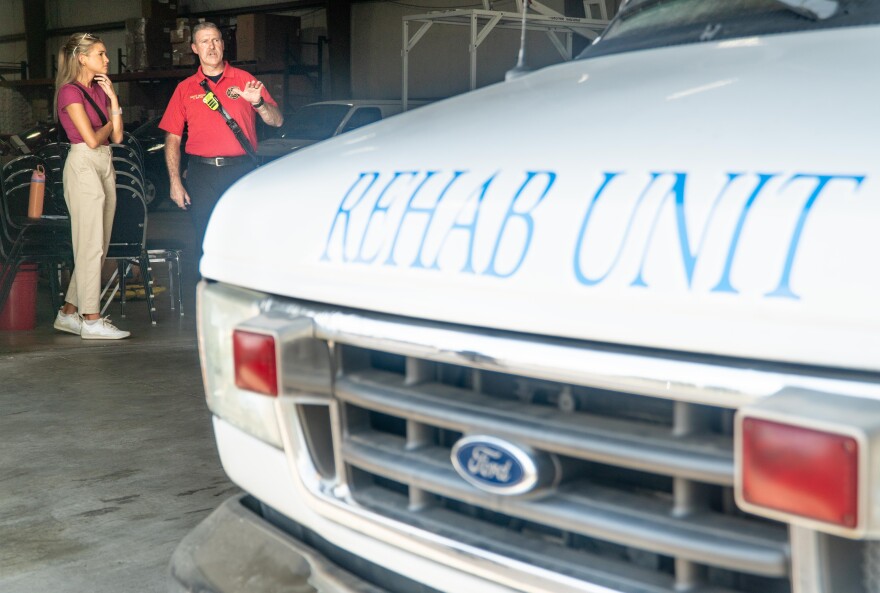
Patty Tapp with the Easterseals Early Learning center in Evansville is leading a group of children up to age 6, in a parachute activity in the big hallway.
The children take turns running under the colorful fabric as their classmates and teachers hoist the parachute aloft, and let it fall back down.
It’s nice and cool inside the Early Learning Center, but outside there’s an extreme heat warning with a ‘real feel ‘ of 104 degrees.
It’s their policy to cancel outdoor activities during a heat index over 95 degrees.
Ann Feldhaus director of children’s programs said their teachers pivot to these indoor activities in a heat wave; they have a variety of equipment available.
“We can set up obstacle courses, different things like that out there that would just allow some of that active play to take place,” Feldhaus said. “I think here locally, we are hitting a record. We're breaking a record of how many consecutive days of high heat we have had for the month of July.”
Evansville has been under an extreme heat warning since July 28, and a heat advisory since July 22.
A cold front is expected to break the heat wave on Thursday. Meteorologist Jonathan Weaver with 44 News said there’s multiple reasons for the current heat.
“We’re right in the middle of summer, and July and August, tend to be the hottest time of year for average, for average high and average low,” he said. “We get this gulf moisture that comes up the Mississippi River Valley, the Ohio River. So it’s just a clash between the tilt of the Earth, the Gulf Moisture, and that sun angle.”
More than 700 people die from extreme heat every year, according to the CDC.

Chad Buttry is an incident safety officer with the Evansville Fire Department (EFD). He said dehydration can lead to heat cramps and heat exhaustion, which can leave people confused and fatigued.
“Then you can go to heat stroke, which is obviously more of an issue in that there can be loss of consciousness, more severe results that could result in you being transported to the hospital,” he said.
Buttry said hydration is key — especially the day prior to a planned activity.
The EFD uses a mobile rehab unit to keep their firefighters safe while battling a blaze in heavy turnout gear. The rehab unit has water, misting fans and a place to cool down on the job.
“Our job is hot on a normal day,” he said. “Temps like this exacerbate it to the point where we have to be very cognizant of what's going on with our crews.”
Buttry said firefighters have been treated on scene for mild heat-related illness but not heat stroke.
Back at Easterseals Early Learning Center, Patty Tapp is washing a child's hands in the classroom sink. Easterseals has built in water breaks throughout the day to keep kids hydrated
Feldhaus said young children are more vulnerable to extreme heat and cold than adults.
“Because of their small body size, they get both hotter and colder than an adult would,” she said. “So it is something that we have to monitor. So you'll see them come in and they even on a day when it's not so hot, and they may be flushed where an adult may not be, they may be sweaty.”
Weaver said the temperature will slowly decline as we lose daylight, but he believes there’s still a few months before it really cools down.
“September, traditionally has been a hot month too,” he said. “So it's really like that first full week, usually right after Fall Festival, is when things start to cool down.”
Support independent journalism today. You rely on WNIN to stay informed, and we depend on you to make our work possible. Give to grow our local reporting today. Donate

